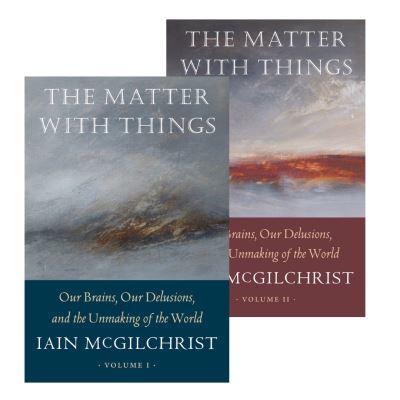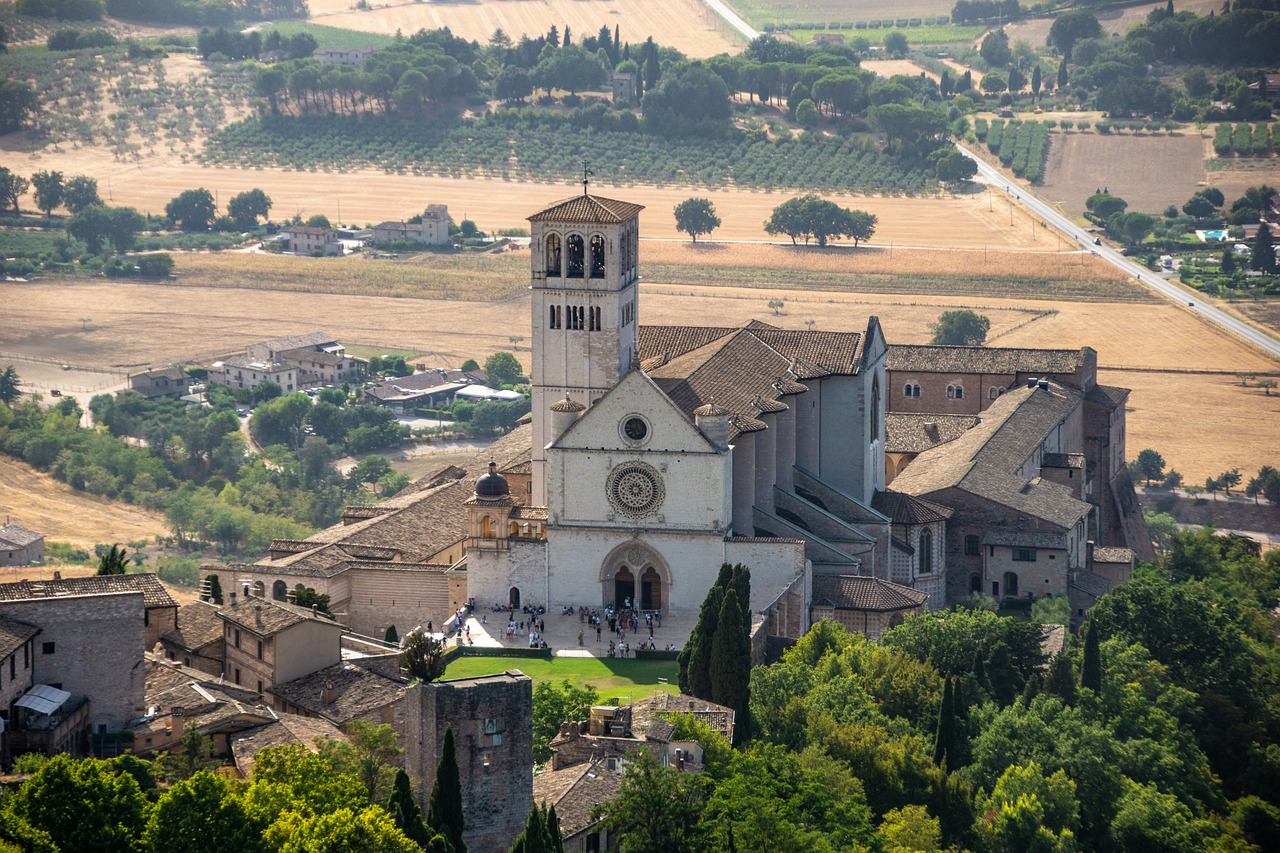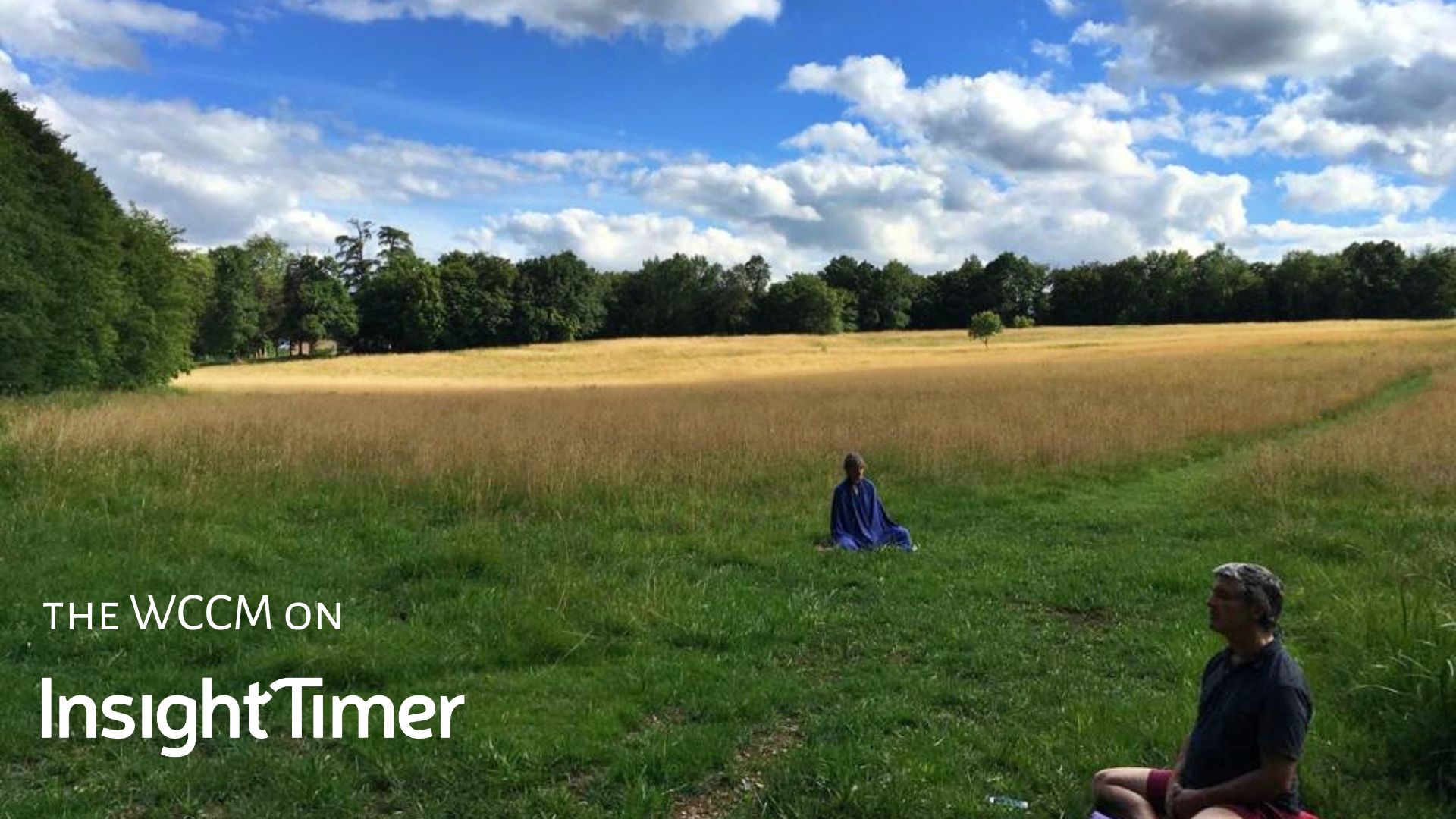“This book is what would conventionally be called a single argument. That is why I have chosen not to publish it as three separate books: one on neuropsychology – how our brains shape reality; one on epistemology – how we can come to know anything at all; and one on metaphysics – the nature of what we find in the cosmos. It is intended as a single whole, each part illuminating, and in turn illumined by, the others.”
I suspect there are already dozens, if not hundreds, of reviews of this book out there. This review is framed by my concern with the spiritual journey and the place of meditation in that journey, but also by a lifelong interest in science and the fundamental nature of consciousness and reality.
I should perhaps begin by issuing a warning – The Matter with Things is not an easy read, and it is not cheap; it is very long (nearly 3,000 pages includes notes, appendices and references). McGilchrist writes exceptionally well but his subject matter is often technical and intellectually challenging; it is definitely not a “skim” read. He does conclude each of the book’s three sections with a summary, but if you left it at that you would miss out on the enormous riches of his references and arguments. For example, Chapter 12 – “The science of life: a study in left hemisphere capture” – is over 100 pages of dense argument about the innate intelligence of living systems, from microbes in the gut to the whole organism. It was a revelation to me, particularly as I had been brought up to believe that biology is essentially mechanical, driven by DNA, usually described simply as a set of instructions as if it were a computer program. McGilchrist’s emphatic insistence that this is not the case is one of several important themes in the book.
Despite its price, the book has sold over 100,000 copies worldwide. It is now available in paperback (only £49!) and as an ebook (£30). It is extraordinarily wide ranging, covering everything from literature, art, music and philosophy to quantum physics, microbiology, neurology and psychology. This reflects McGilchrist’s own idiosyncratic and, by comparison with most of his peers, extravagantly catholic academic journey, from theology, philosophy and literature to medicine, neurobiology and psychiatry, which he has practised for 30 years.
A summary of McGilchrist’s argument

In 2009, Yale University Press published McGilchrist’s “The Master and his Emissary” in which he set out his thesis that the left and right hemispheres of the brain are asymmetrical and that they have different, albeit complementary, functions. The left hemisphere is specialised for language processing, analytic and logical thinking, detail and abstraction. The right hemisphere has a more diffuse set of functions.
He shows that left – right asymmetry holds true throughout the animal kingdom, from worms through reptiles all the way up to human beings. And that there is a simple evolutionary explanation for why this is the case. All creatures, whether prey or predator, face a similar challenge. More or less simultaneously, they need to give attention to the hunt for food, which requires a narrow focus on opportunities immediately to hand (seeds and insects on the ground, fruits and nuts in trees, vulnerable prey animals in their vicinity) and at the same time maintain a general awareness of their environment so as to detect potential threats or opportunities. These are two kinds of attention, one highly focused and specific, immediate and local, the other a more general awareness, taking in the whole scene, not being absorbed or distracted by particular elements. The former is task / goal oriented – kill the gazelle, spot the grain among the pebbles, sand and grasses – while the latter is process oriented, observing changes in the environment over time, noticing novelty and difference.
So, classically, the left hemisphere likes to categorise or label features of its input from the right hemisphere, that is, direct experience – “that’s a kind of seed, good to eat”, “those are non-threatening animals” – in order to focus on the particular task it has set itself.
There was, inevitably and unsurprisingly, some considerable pushback against his ideas, particularly from those scientists and others who are very invested in contemporary attitudes to science, human nature and the nature of reality. So “The Matter with Things” is at least in part a response to that pushback, but also a much deeper exploration of the ideas and issues raised by “The Master and his Emissary”.
There was, inevitably and unsurprisingly, some considerable pushback against his ideas, particularly from those scientists and others who are very invested in contemporary attitudes to science, human nature and the nature of reality. So “The Matter with Things” is at least in part a response to that pushback, but also a much deeper exploration of the ideas and issues raised by “The Master and his Emissary”.
Themes
In no particular order, these are some of the themes explored by McGilchrist. That the world is not made of stuff. Reality is not made of things. We and the Cosmos are not machines, assembled from components such as particles or cells, which together function in the same way as clockwork, or the internal combustion engine, or a computer program. Quantum physicists tell us that the deeper they go to explore the nature of things, the more they realise that there are in fact no things. Particles (the smallest bits of matter discovered by machines like CERN’s Large Hadron Collider) are not things, like billiard balls, as the Greeks thought of atoms (that which cannot be any more divided), or as Isaac Newton conceived of the world; rather particles are more like photographs of processes, snapshots of events which are continuing from past to future. So what we see as things – tables, other people, clouds – are more like the wake of a ship, only in reality, there is not even a ship – we just assume there must be one because we can see its wake.
This is important, vital even, because what the right hemisphere is tuned to do is to see the overall process, to experience events as taking place in space and time, dynamic, responsive and reacting, parts of webs and networks of phenomena, all of which are connected and affected by every other process.
The left hemisphere, for very good evolutionary reasons, operates in a fundamentally different way. It selects elements from the right hemisphere’s experience, freezes them in time and space, so that it can then examine, manipulate and control them. It does not deal in direct sense experience, but in what it considers useful abstractions. If you are operating through the right hemisphere, you do not see an abstraction, a generalised version of say a tree, but a unique process – a living entity, continuously changing in response to its environment. The left hemisphere sees fuel or building material, shade, food, or a component of a formally designed garden or park. It sees only what is useful or harmful to its purpose, not this unique tree as it is in itself.
Left brain thinkers and scientists take an analytic, bottom up, materialist approach, where consciousness or awareness are presumed to be merely epi-phenomena, emerging from inanimate matter, possibly as a by-product of complexity. As a result, it is impossible for them to imagine that existence / being could have a direction, a telos. That would surely be simply to anthropomorphise the universe – how could dead particles, atoms and molecules, machine like cells and organisms have any plan, any sense of a direction?
Religious fundamentalists (who are as left hemisphere dominated as materialist scientists like Richard Dawkins) say that all this is engineered by a God, sitting outside and above his creation. However, McGilchrist shows that intelligence goes all the way down – that individual cells are intelligent – and all the way up – entire ecosystems appear to function intelligently and dynamically (see for example the relationships between funghi and woodland). A single-celled amoeba has awareness, agency and memory. Our bodies function as organic wholes – individual cells respond to their immediate environment, but they also signal to and respond to other cells and to the whole organism. We do not live in a bottom up or top down world of stuff – we live as part of wholes, networks, relationships and processes all the way up and all the way down. It’s all one dance.
The brain has evolved to deal with reality. The physical structure of our brains and the way they operate is an evolutionary response to reality – they have evolved for a better fit with the world as it is, as indeed have all living organisms. The brain is the way it is because it conforms to reality – which is both one and many – and we need to be able to deal with both aspects in their proper relation. Meditation helps to put the left hemisphere back in its box, by giving it something empty to focus on; which allows the right hemisphere to resume its rightful place and, eventually, for us to rest in this state of awareness continuously.
Postscript: For an excellent introduction to Ian McGilchrist and The Matter with Things, I recommend this interview which he gave recently to Beshara magazine here.







1 thought on “The Matter With Things: Our Brains, Our Delusions and the Unmaking of the World by Ian McGilchrist”
Thanks, David Simpson, for your review of I McGilchrist book, and for introducing me to Beshara magazine. I have been listening to various interviews with I McGilchrist for some months now, and I thank God for him.